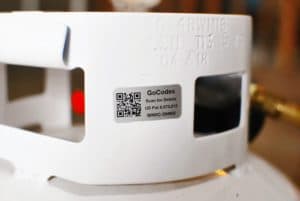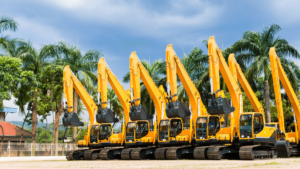
In this article...
Available Tool Room Management Solutions
Many young companies rely on manual tool room management solutions. Tool room spreadsheet programs and word processing applications are often the go-to resources that these small businesses use to track the status of their important tools and pieces of equipment. While tool room spreadsheets offer business operators powerful analytical capabilities, they don’t efficiently scale to accommodate growing organizations. If you expect significant growth within a year or two, you’ll want an automated asset management solution that supports a robust database of inventory. Automated tool room management solutions allow you to easily update your inventory and track tool check outs and returns. These software solutions save time, and they reduce human errors in equipment tracking.
Some Desired Features for Your Tool Room Management System
#1 Local Installed Software vs. Cloud Software
The two types of tool management software are installed applications and cloud-based programs. Installed applications reside on specific hardware in your office. You can only access these software tools when you log into the PCs and servers on which they’re installed. While your IT department can give users remote access to servers that have the software, this practice poses a security risk. Outdated software is also a cybersecurity risk that hackers often use to exploit computer systems. If you use installed software, your IT department has to keep up with new software releases and install software updates manually. Cloud-based tool room management solutions live on remote servers that allow users to access the software from anywhere that has an internet connection. Your team will have access to the latest version of data about your inventory since database changes are made quickly and consistently in the cloud. Most cloud servers benefit from firewalls and encryption that deter access by unauthorized users. Since these servers are independent of your company’s suite of computer systems, your network is protected against security breaches that are caused by remote access of installed tool room management software. Cloud service providers do a great job of delivering redundancy that safeguards your tool inventory data even if your office’s computers are destroyed by a natural disaster or a fire. When your tool room management software resides on the cloud, you also benefit from automatic patches and software updates. This allows your IT staff to focus on more important activities.
#2 Hand-Held Scanners vs. Smartphone Scanner Apps
Scanning inventory has become a standard feature of most automated tool room management solutions. If you have hundreds of items to track, you understand the importance of this capability. Depending on the size of your organization, your company’s inventory manager and his or her team scan tools into your inventory database in bulk with either hand-held scanners or smartphone scanner applications. A company that uses a tool room management solution that implements hand-held scanners must buy extra equipment as part of the package. This extra expense increases significantly over the years when your organization’s tool and equipment inventory grows. Besides having your asset management system tied to specific models of hand-held scanners, the scanners also must be inventoried and controlled just like other pieces of equipment. Smartphone scanner applications offer a more flexible solution for inventory managers and their teams. Tool room management solutions that use these mobile apps allow unlimited users to download the software and scan inventory for quick check outs and returns. This type of tool room management system is great for tool rooms that are set up at multiple job sites. When you use a mobile app scanning solution, you don’t have to worry about getting hundreds of hand-held scanners to different locations. Users access the software using their own smartphones.
#3 Labels and Barcodes
Most automated tool room management solutions place labels or barcodes on tools to help track, control, and maintain them. These barcodes contain information about the tools that support seamless inventory management such as their unique identification numbers, names, and purchase dates. Modern QR codes allow users to scan labels with their smartphones and gain access to relevant information about the asset. They can also update information about a tool while on the go. The changed data shows up when the next user scans the QR code label that’s affixed to the tool. A QR code label doesn’t do much good if it can’t withstand your job site’s harsh physical environment. If your work crews mostly use company tools indoors, QR codes that are made of a polyester or plastic material may be sufficient for your organization’s needs. However, tools that are exposed to extreme weather conditions or chemicals need ruggedized QR code tags. Find tool room management systems that offer anodized metal tags. Technology makes inventory tracking easier than ever before. QR code tags that are scanned via a mobile device can be tracked by GPS. You can find the exact location of an important tool or piece of equipment by using innovative QR codes and GPS-enabled code readers such as smartphones or tablets.
#4 Service and Maintenance Tracking
Your company’s service motto is that your team can handle any size job. Making good on this promise requires preparation and exceptional tool room organization. Automated tool room management systems help businesses to keep their tools, equipment, and other assets defect-free with their service tracking features. Preventative maintenance and swift repairs allow you to keep up with customer demand in a professional and efficient way. With an automated tool room management system, your inventory manager can schedule periodic maintenance for a valuable piece of machinery. He or she can also record the type of service activity that was done on an asset and the last time that it received the repair work. You’ll want a tool room management system that allows you to create customized fields so that you can track the maintenance and repair data that’s important for your business.
#5 Add a Picture or File
When searching through a catalog of tools, equipment, and other machinery, pictures give users a quick confirmation that they’ve selected the right item. That’s why the best automated tool room management systems allow you to upload pictures that are associated with the tools in your inventory. Some of these management systems also support user uploads of other files such as word processing documents, PDFs, and spreadsheet files. Throomis feature lets inventory managers keep important documents such as warranty information, user manuals, and component schematics in a convenient, central location.
#6 Tool Reservation
Every job requires company assets to complete, and tool room management software helps with job planning. The management software allows crew leaders to reserve tools or special equipment by job orders. This ensures that each project has the right tools for the job from start to finish. Managers have a broader view of a company’s pipeline of work. When expensive assets are in short supply, they can use the reservation data from the automated tool management system to prioritize work orders according to the company’s strategic goals and customer obligations. Business leaders can also use the enterprise tool management system’s data to predict the end of life for expensive machines and make decisions about buying new equipment.
#7 Run Reports
Successful businesses run on data, and modern tool room management systems offer robust reporting capabilities to keep your company moving forward. When it comes to collecting the right data and producing reports, custom inventory tracking is key. Organizations that are responsible for inspecting public safety equipment such as defibrillators, heart monitors, and fire extinguishers need efficient ways to track assets as well as the types of inspections that they undergo. When the company gets audited, managers need a way to give quick status about the pieces of equipment and their maintenance records. Business leaders are also required to keep up with the financial status of tools, machinery, and other physical assets. Some tool room management systems calculate asset depreciation automatically and allow users to generate custom reports about those assets. An automated tool room management system gives you the speed and flexibility to respond with easy-to-read reports for appropriate stakeholders.
#8 Automatic Database Updates
As your company grows, you’ll have multiple crew leaders who rely on tools and equipment in your tool room to do the best possible job. A tool room spreadsheet system can’t efficiently handle numerous tool reservations, check outs, and returns that happen at the same time. You’ll need an agile automated tool room management system that’s backed by a robust database. These systems are often powered by lightweight applications that allow work crews to easily navigate the inventory, select items, and update the inventory. Having an automatic database update feature means that each user sees the latest inventory status.
#9 Automatic Status Alerts
Have a few specialty pieces of equipment that are shared among workers in your company? The best way to make sure that you keep track of these items is through an automated tool room management system that has a status alert feature. With this type of management system, you can get alerts about equipment returns and high-priority job orders that require the assets. You can also customize some tool room management systems to send you alerts when pieces of equipment aren’t returned on time. If your company decides to buy extra pieces of equipment to fulfill an important job order, your tool room management system can send an alert to a crew leader about the new addition to the asset inventory.
#10 Integration with Your Company Security Cameras
Busy job sites, expensive machinery, and a host of subcontractors and temporary laborers produce the ideal environment for losses and theft of equipment. However, the same technological advances that brought together these physical and human resources are the same ones that can help to safeguard your assets. The internet of things (IoT) gives business leaders insight into equipment performance, logistics, and other business operations. Business security systems are major components of the IoT landscape. You’ll want an automated tool room management system that integrates with physical security system components such as motion detectors, surveillance cameras, and two-way audio speakers. For instance, you’ll want video recordings of check-outs and returns of expensive machinery and equipment that are available to numerous work crews. This feature is especially important if your company doesn’t have a dedicated inventory manager.
#11 Inventory Tracking
Fixed assets aren’t the only items that tool room management systems help you to track. You can also monitor your inventory of consumable items such as nails, screws, and paper products. At any time, inventory team members can give managers a snapshot view of items that are in short supply and those that show surpluses. This feature helps you to buy what you need at the right time, and it gives you leverage when negotiating terms with your suppliers.
#12 Integrate with MS Excel to Support Data Import
You’ve grown your business steadily over many years and only recently decided to consider an automated tool room management system. What will you do with all those spreadsheets that multiple work crews used for decades to manage their inventory of tools? The data that your company has collected over the years is valuable, and managers generate reports from the spreadsheet data to justify purchase decisions and to support bids on new contracts. If you select the right tool room management system, you’ll be able to import the data from those old spreadsheets that are housed on different PCs within your company. Some tool room management systems allow you to create custom fields that match the ones on your old spreadsheets. When you upload the spreadsheet data items into the new system, you populate the fields that you created with the data in the spreadsheet cells. A bulk upload feature is very beneficial in these cases.
Organizations That Need Tool room Management Software
Construction Companies
General contractors work under tight schedules. Project delays have a ripple effect. Framers who can’t finish their part of the construction job on time push the schedule back for trim carpenters who can’t start their section of the job until much later. Shortages of skilled construction workers and bouts of bad weather indicate that the construction company will experience further delays that will undercut profitability. While you can’t control labor availability and weather conditions, you can make sure that your team has the right tools that it needs to complete tasks efficiently, safely, and to your company’s quality standards.
School Districts
Funding for school districts is a hot topic in the education industry. Districts that get healthy funding from taxpayers are often blessed with the latest laptops, tablets, and virtual reality systems. If your school district struggles to make every dollar count for students, you’ll want to consider an automated asset management system that helps your school to keep track of valuable learning tools.
Car Dealerships
When car owners want quality services and repairs for their vehicles, they consider taking their cars to dealerships. Car dealerships invest in specialized tools, machinery, and diagnostic equipment that allow certified technicians to quickly fix vehicles and make them safer to drive. Lost tools lower productivity, and these assets are expensive to replace.
Military and Defense Agencies
Military installations are known for their supply depots that house thousands of parts for aircraft maintenance, shipbuilding, and facility management. The tools, equipment, and machinery that support military readiness are just as important as weapon systems. When lives, time, and tax money are on the line, your organization needs an automated tool room management system that tracks, monitors, and controls valuable assets on a 24-hour basis. Here are some other industries that benefit from asset management software solutions.
- Manufacturing facilities
- Public safety services
- Private security services
- Healthcare/medical facilities
- Commercial cleaning services
Conclusion
Establishing tool rooms undoubtedly saves companies time and money. However, upgrading to a tool room that’s managed by state-of-the-art tool room software also supports your brand’s reputation for quality work and responsive customer service. If you have questions about the benefits and features of tool room management software, give us a call. We’ll be happy to help you to achieve your asset management goals.






